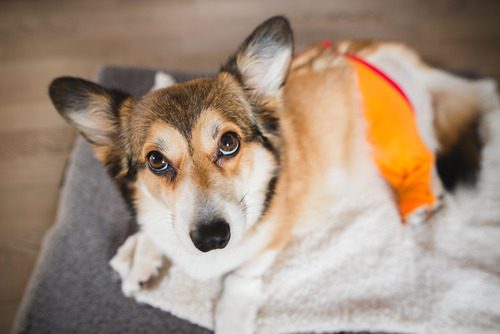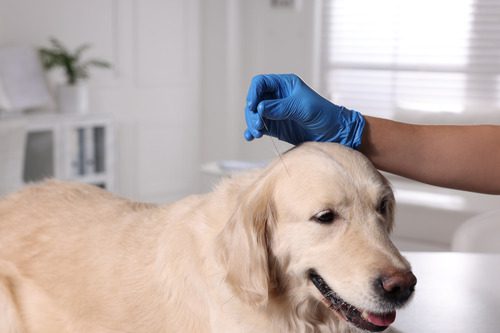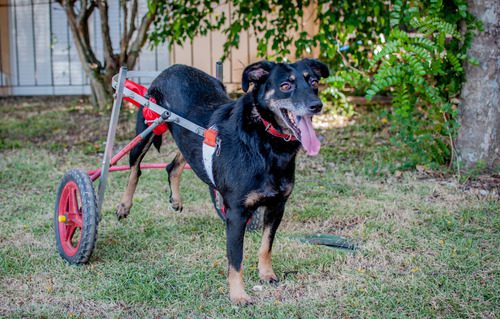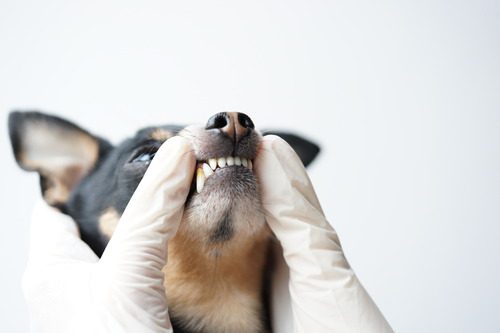Dog CCL Surgery: Cost & Recovery
When your dog starts limping or suddenly refuses to put weight on a back leg, it’s easy to feel worried and unsure of what to do next. One of the most common causes of this kind of lameness is a torn cranial cruciate ligament (CCL), a painful injury that often requires surgery. Dog CCL surgery can sound intimidating at first, especially when you’re faced with questions about cost, recovery, and what the road ahead might look like. In this blog, we’ll break everything down clearly and thoroughly so you can feel confident about your options and better prepared to support your dog through every stage of the healing process. If you suspect your dog may need CCL surgery, Cornerstone Veterinary Hospital of Clifton Park is here to help. Call us today at (518) 383-6254 or request an appointment online.

What is Dog CCL Surgery?
Dog CCL surgery addresses injuries to the cranial cruciate ligament, which is the canine equivalent of the human ACL. This ligament stabilizes the knee joint, and when it tears or ruptures, it causes pain, inflammation, and instability. A torn CCL doesn’t heal on its own and often worsens with time, making surgery the most effective long-term solution.
There are several surgical techniques used to stabilize the joint, and your veterinarian or surgeon will determine the best approach based on your dog’s size, age, activity level, and overall health. Regardless of the surgical method used, the goal remains the same: to restore function, reduce pain, and prevent future joint damage.
Common Types of CCL Surgery for Dogs
Different dogs benefit from different surgical approaches. The most commonly recommended procedures include:
Tibial Plateau Leveling Osteotomy (TPLO)
TPLO surgery is often performed on large or active dogs. This technique changes the angle of the tibia (shinbone), so the knee no longer depends on the CCL for stability. TPLO surgery involves cutting and rotating the tibia, then stabilizing it with plates and screws. It requires technical expertise but offers excellent results for many dogs.
Tibial Tuberosity Advancement (TTA)
TTA surgery also alters the forces within the knee to stabilize the joint. It’s less invasive than TPLO in some cases and may be a suitable alternative depending on your dog’s anatomy. Like TPLO, it involves implants and a precise bone cut to encourage proper healing.
Lateral Suture Technique (Extracapsular Repair)
This method is most commonly recommended for small to medium-sized dogs. It uses a synthetic suture to mimic the function of the torn ligament. This procedure is less invasive than TPLO or TTA and typically comes with a shorter surgical time and lower cost. However, it may not be as durable for larger or more active dogs.
Dog CCL Surgery Cost: What to Expect
The cost of dog CCL surgery can vary significantly based on the technique used, your geographic location, your dog’s size, and whether a general practice or specialist performs the procedure. On average, pet owners can expect dog CCL surgery to cost $2,299, but it can range anywhere from $1,200 to $9,500. These costs often include anesthesia, hospitalization, medications, and follow-up visits. However, diagnostic imaging, pre-surgical bloodwork, and post-op rehabilitation may be billed separately. Always request a detailed estimate and discuss what’s included so there are no surprises later.
Factors That Influence Cost
- Dog’s weight and breed
- Severity of the injury
- Surgical materials used (plates, screws, implants)
- Facility and surgical team expertise
- Additional services like imaging or rehab therapy
At Cornerstone Veterinary Hospital of Clifton Park, we’ll provide a thorough cost breakdown and help you understand every component of your dog’s treatment plan.
Recovery After Dog CCL Surgery
Recovery from dog CCL surgery takes time, structure, and patience, but it can lead to a much-improved quality of life. The first 12 weeks after surgery are the most critical for healing and joint stabilization.
Immediate Post-Op Period (Weeks 1-2)
Most dogs go home the same day or the next day following surgery. Pain medications, anti-inflammatory drugs, and possibly antibiotics will be prescribed. During this time, strict rest is essential. Limit your dog’s movement and use a leash for bathroom breaks only. No running, jumping, or stairs. Your veterinarian may also provide an e-collar to prevent licking the incision and instructions for icing the surgical site. Monitoring for swelling, bleeding, or discharge is important, and any concerns should be addressed quickly.
Controlled Activity and Rehab (Weeks 3-6)
As healing progresses, you’ll gradually reintroduce short walks on a leash. Range-of-motion exercises, passive stretching, or cold laser therapy may be recommended to improve healing and reduce stiffness. Rehabilitation during this period can significantly improve outcomes. A veterinary professional can tailor a program based on your dog’s progress and comfort level.
Increasing Mobility (Weeks 7-12+)
Most dogs begin regaining strength and coordination by this stage. Walks become longer, and low-impact exercises like swimming or underwater treadmill therapy may be introduced. You’ll still need to limit intense activity and monitor for signs of discomfort or limping. Full recovery can take 4 to 6 months. However, many dogs show notable improvement within the first 8 to 12 weeks with consistent care.
Long-Term Care After CCL Surgery
Even after your dog has recovered, ongoing management can help maintain joint health and prevent issues in the opposite knee, which is at risk of tearing in many dogs following a unilateral CCL injury.
Weight Management
Keeping your dog at a healthy weight reduces pressure on the joints and lowers the risk of future ligament injuries. Obesity is one of the most common contributors to joint strain, so regular weigh-ins and portion control are essential.
Joint Supplements
Your veterinarian may recommend supplements like glucosamine, chondroitin, or omega-3 fatty acids to support cartilage and reduce inflammation. While supplements won’t cure existing damage, they can help maintain comfort and joint function over time.
Regular Exercise and Activity
Low-impact exercise helps preserve muscle tone and mobility. Regular walks, swimming, and gentle play can keep your dog active without overloading their joints. Avoid repetitive high-impact movements like jumping for toys or chasing balls on hard surfaces.
Monitoring the Opposite Knee
In up to 50% of dogs, the opposite CCL can rupture within two years of the first injury. Regular veterinary exams and early detection of limping or lameness can lead to faster treatment and a better outcome if a second surgery is needed.
Planning for a Healthier Future
Dog CCL surgery is a significant step, but for many pets, it marks the beginning of renewed comfort and mobility. While the cost and recovery period can feel overwhelming, the outcome often makes it worthwhile. Dogs that undergo surgery typically return to their favorite activities with minimal pain and improved quality of life. At Cornerstone Veterinary Hospital of Clifton Park, we take the time to educate and guide you through every phase from diagnosis to recovery. If your dog is limping, hesitant to jump, or struggling to put weight on a leg, contact us at (518) 383-6254 to schedule an exam. We’ll evaluate your dog’s condition and help you understand your options with compassion, transparency, and expert care.
Recent Posts
Dog Acupuncture: Does It Really Work?
Dog Acupuncture: Does It Really Work? Dog acupuncture might sound unconventional to some, but this holistic treatment…
Degenerative Myelopathy in Dogs
Degenerative Myelopathy in Dogs Degenerative myelopathy in dogs is a progressive spinal cord disease that often takes…
Dog Tooth Abscess Burst: What to Do
Dog Tooth Abscess Burst: What to Do You’re petting your dog and notice swelling near their muzzle,…
About Us
Originally opened as Animal Care Hospital by Dr. Mark Johnston in 1989, the hospital became Cornerstone Veterinary Hospital in 2015 when it was purchased by Drs. Alan and Lisa Knott. The name 'Cornerstone' holds a special place in their hearts, representing not only their Christian faith but also their commitment to being the cornerstone of the community in which they practice. As a family-owned and operated practice, every pet is treated as part of the family, ensuring they receive the highest standard of care. The team at Cornerstone Veterinary Hospital is dedicated to building lasting relationships with clients and their beloved pets, striving to be the cornerstone of the community in which they practice.



